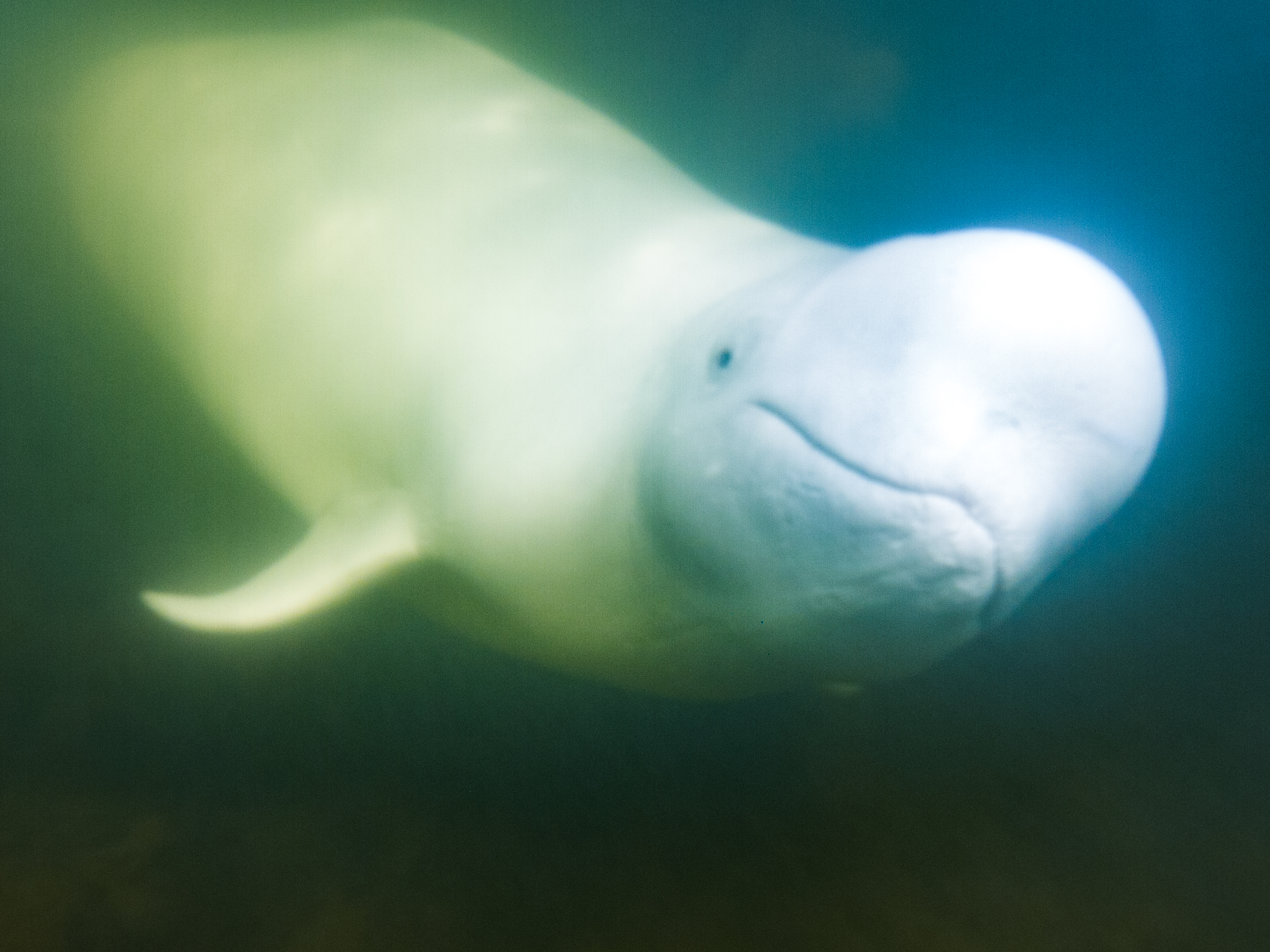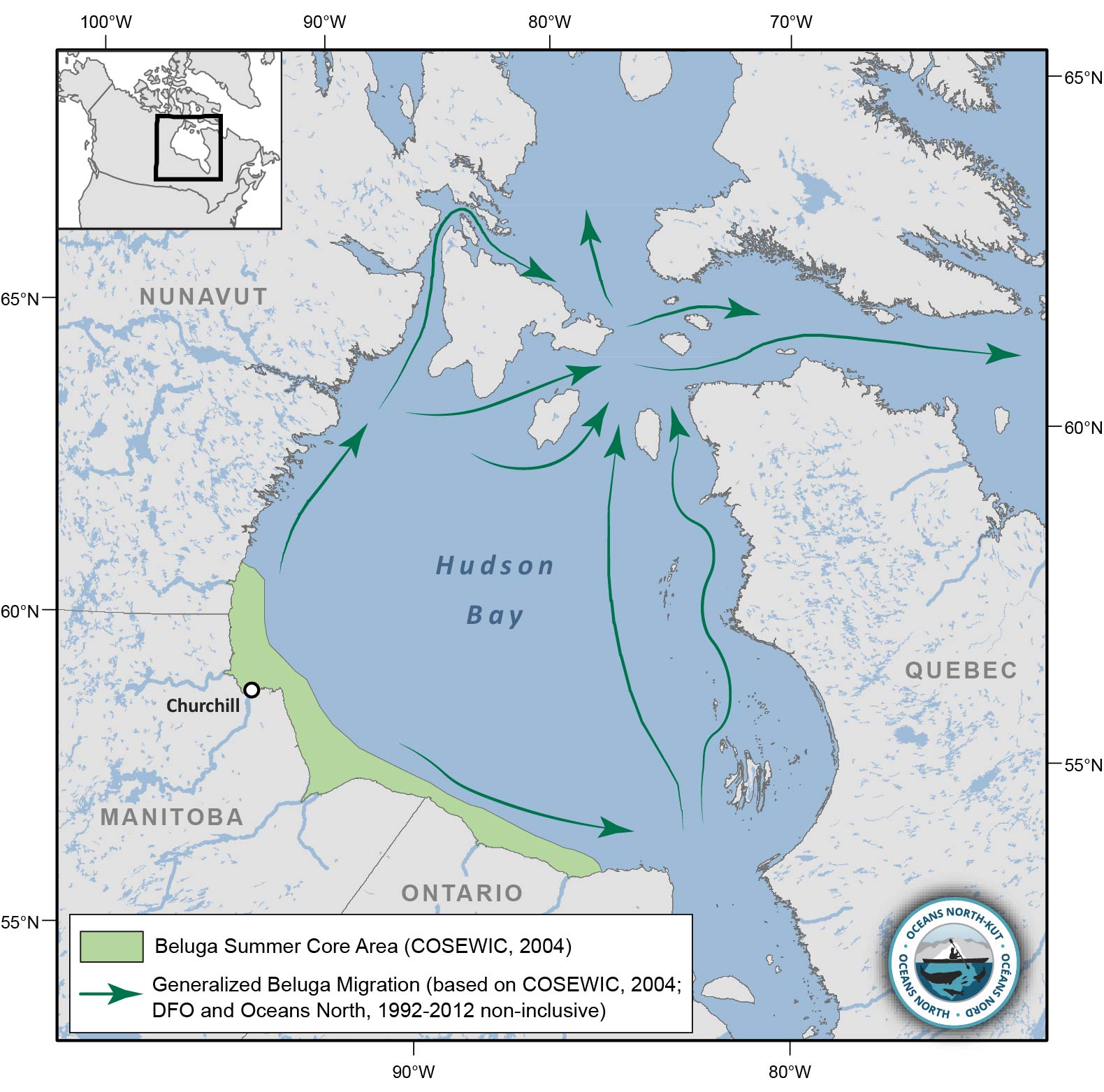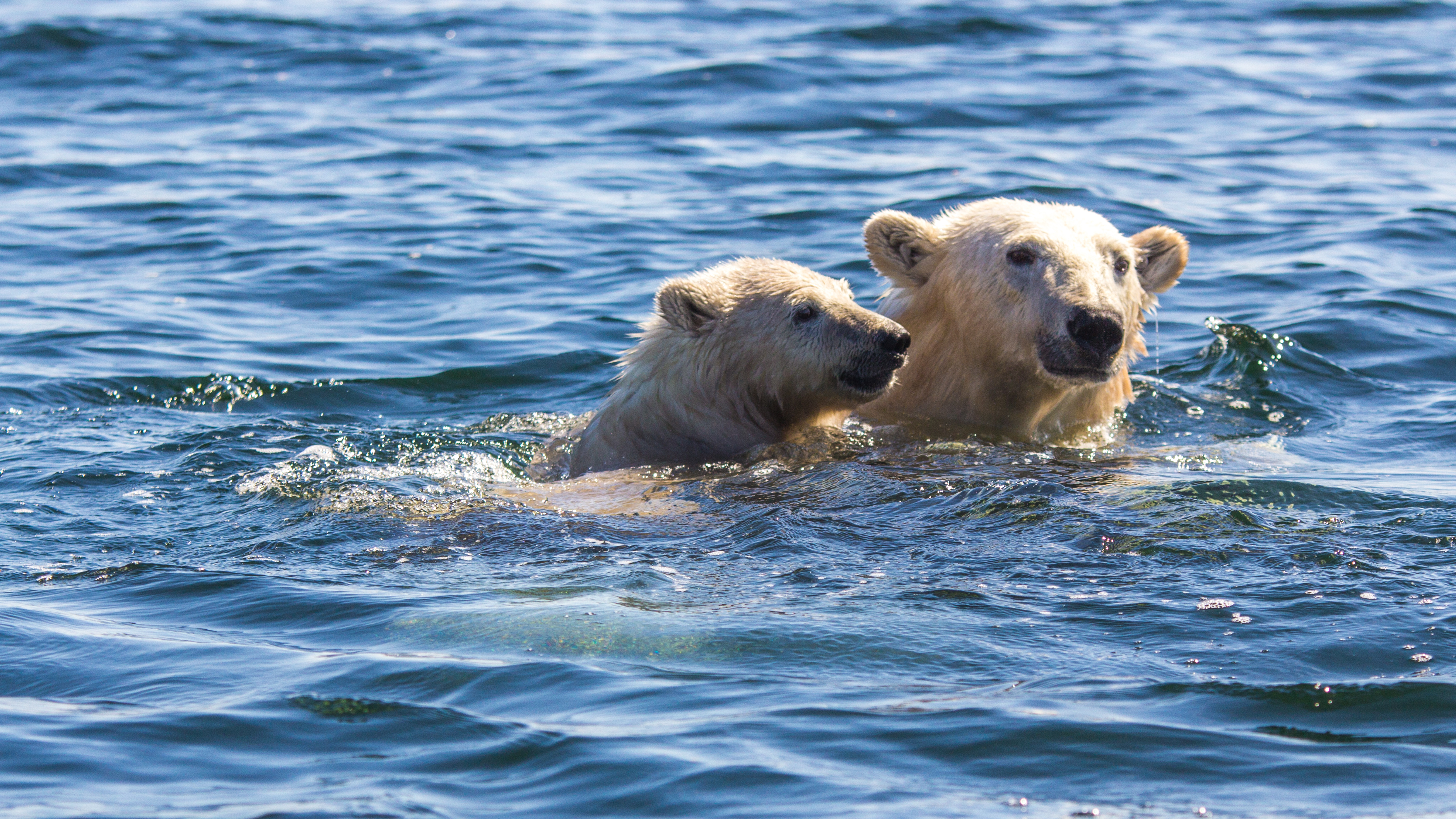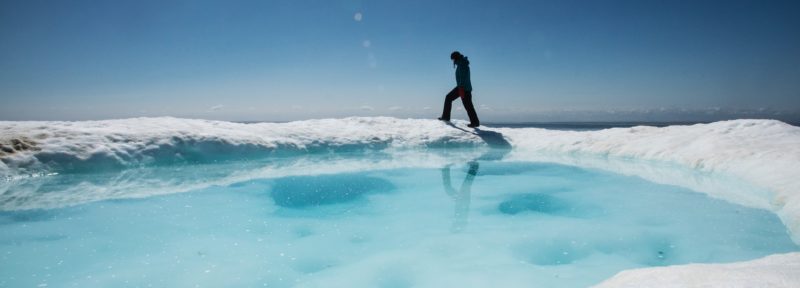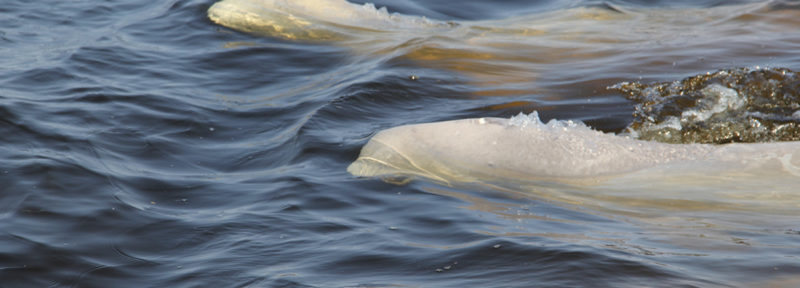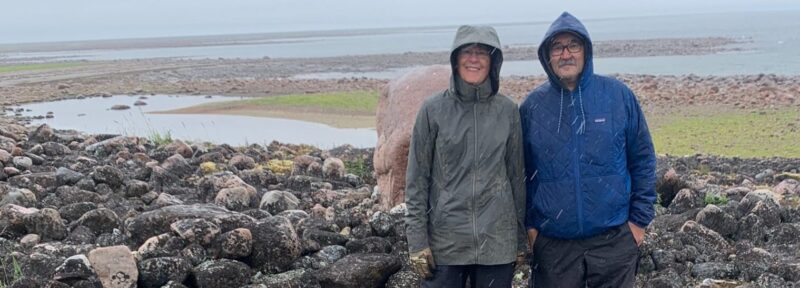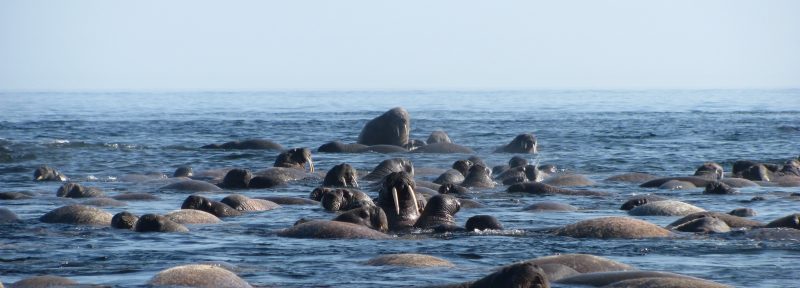New Report Urges Protection for Western Hudson Bay’s Beluga Estuaries
Some places in our oceans deserve special protection because of their ecological significance, while other areas have exceptional cultural value. Western Hudson Bay is both a cultural and ecological treasure. That’s why Oceans North has released a new report called “Western Hudson Bay and Its Beluga Estuaries: Protecting Abundance for a Sustainable Future” which advocates for a national marine conservation area in this region.
A beluga whale swims in the Seal River estuary of Western Hudson Bay.
Crédit : Oceans North
Each summer, as the sea ice recedes, more than 55,000 belugas return to estuaries in Manitoba’s Western Hudson Bay. These estuaries provide critical habitat for nearly one-third of the planet’s belugas. Tourists travel to the nearby town of Churchill from all over the world for a chance to see these magnificent white whales that congregate in the Nelson, Churchill and Seal river estuaries to molt, feed, calve and escape predation. Year after year, belugas predictably return, exhibiting what marine biologists refer to as site fidelity.
For the last six years, the team at Oceans North has also been coming back to the estuaries. In 2012, we partnered with Fisheries and Oceans Canada and the Province of Manitoba to study belugas in the Seal River estuary. That work included tagging six whales with transmitters that generated data about how belugas use this summer habitat. While belugas have a tendency to drop their tags before the transmitter batteries fail, we did obtain information about several whales’ migration routes and wintering ranges in Hudson Strait. Combined with studies in subsequent years, we gained a more complete picture of beluga habitat use that can inform boundaries of a future protected area.
Crédit : Oceans North
With the help of Nunavut partners, we’ve also documented human connections to this ecosystem. An archaeological dig at Hubbard Point near the Seal River estuary in collaboration with the Inuit Heritage Trust and research scientist Dr. Virginia Petch showed that Inuit have occupied the hunting camp there for close to a thousand years. Further research may find evidence of even earlier occupation. This centuries-old connection speaks to the enduring importance of the beluga migrations in Hudson Bay. During this migration, the whales pass by many hamlets – Arviat, Whale Cove, Rankin Inlet and Coral Harbour, to name a few. Residents in these communities depend on the belugas as a vital food source in a region where store-bought options are deficient.
A polar bear and her cub swim near Western Hudson Bay's Seal River estuary.
Crédit : Jeremy Davies
In 2017, the federal government signaled its intention to create a national marine conservation area in Western Hudson Bay to help ensure that this beluga population remains healthy. It’s time for the federal government to make good on this promise. Not only will a national marine park protect belugas and other marine mammals, it will also provide economic benefits like jobs, infrastructure, research and increased tourism. Most importantly, such a designation in Western Hudson Bay can help harmonize human activity with conservation principles and secure a sustainable future.
Chris Debicki is vice-president of policy development for Oceans North.

